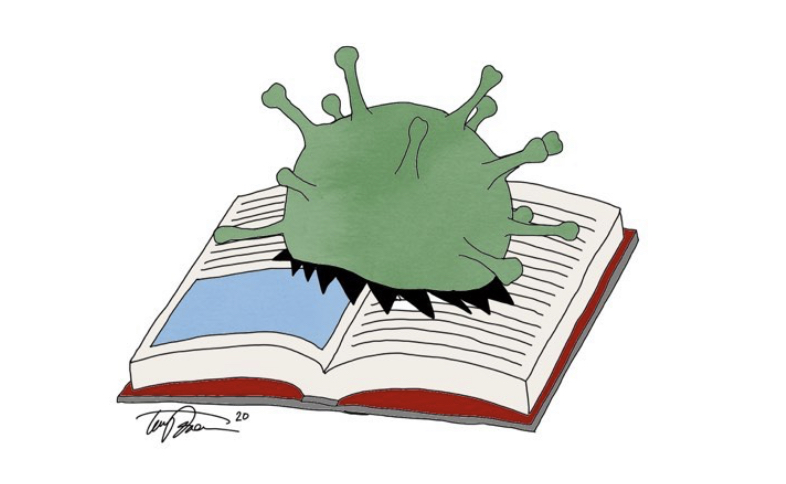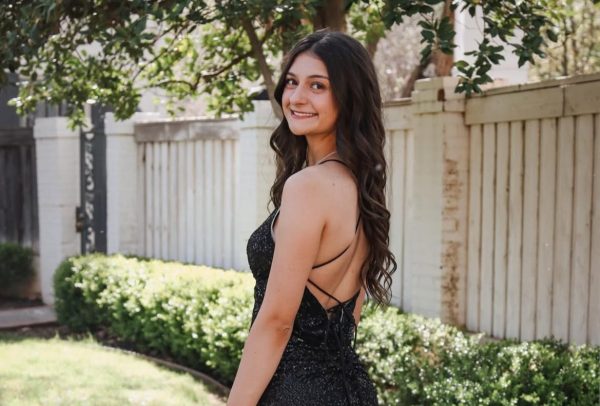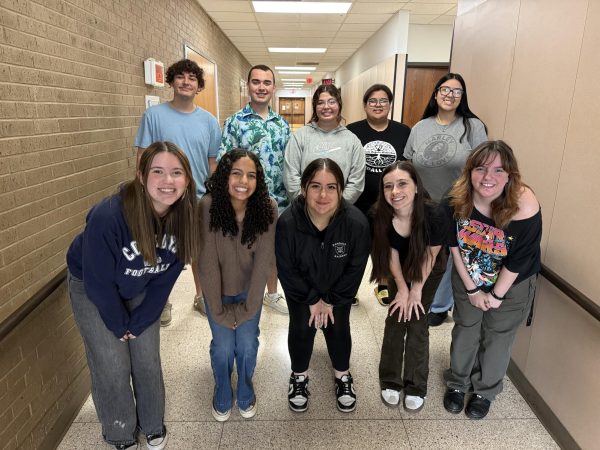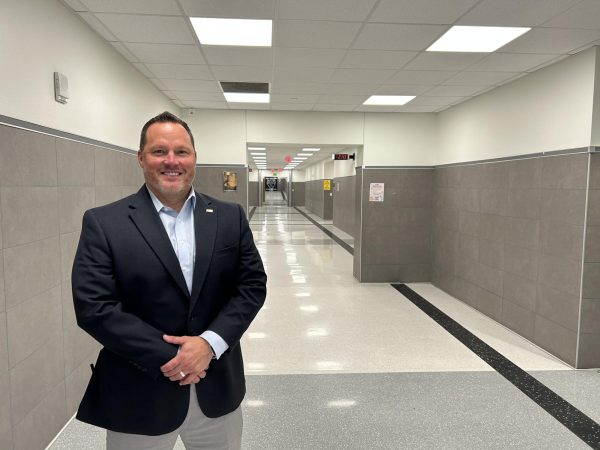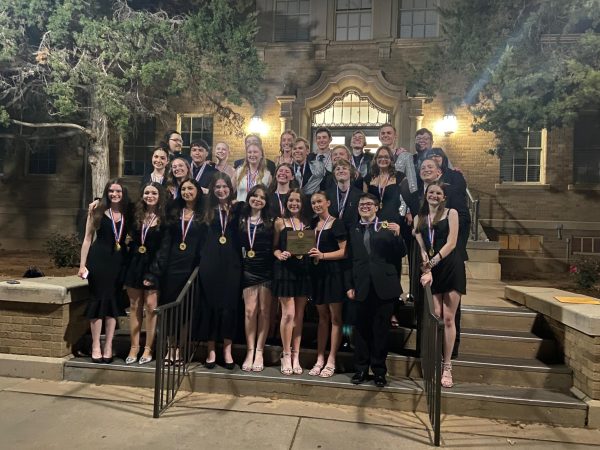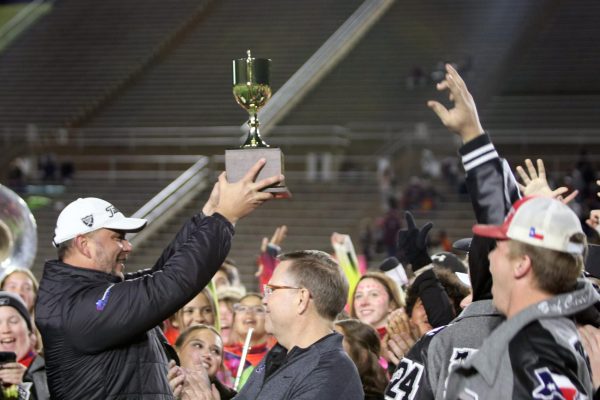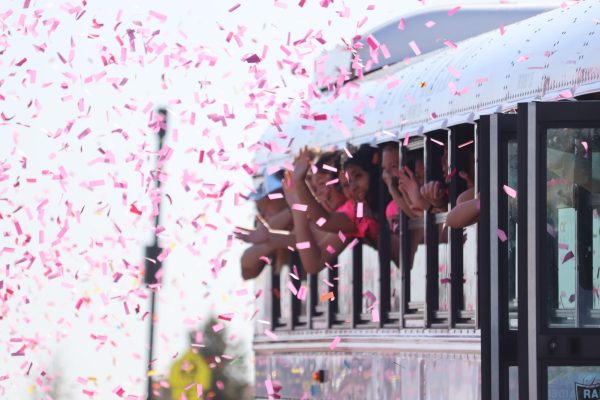Students and Staff Adjust to Life During COVID-19
Photo Illustration by senior Tanner Davison
When COVID-19 hit the country in March, people around the country began initiatives to stop the spread of the virus. During Spring Break, CISD students learned that they would not return to school as scheduled.
Due to growing health concerns surrounding COVID-19, Texas Gov. Greg Abbott instructed schools to remain closed until at least May 4. In response, CISD implemented School@Home as a way for learning to continue outside of the classroom.
The School@Home website is separated by school then by grade or teacher. Assignments are posted to the website and teachers are urged minimize lessons and assignments to no longer than 15-20 minutes per class per school day. To help students with this transition, the school district is doing additional things such as providing Chromebooks to students, setting up WiFi hot spots in specific school parking lots and providing sack lunches available for pick up.
As the district struggles to make online schooling a possibility, teachers are faced with the task of converting their traditional classroom into an online format. Band director, Ginger Denney, is among these instructors who are scrambling to adjust.
“At first, like many other teachers, I was frustrated and felt like I was spinning my wheels trying to balance making sure my students were okay, that they knew I missed them, making sure my family was all okay and had what they needed,” Denney said. “(In addition), I had to wrap my brain around the idea of how in the world am I going to teach band online.”
Many teachers, like Denney, are trying to find resources that will work for every student and their home space. Whether that be trying to get students in contact with companies who are offering free WiFi for educational use, calling students at home who need additional help or support, adjusting lesson plans or learning new apps to assist in a School@Home environment, teachers are attempting to make education continue despite the COVID-19 crisis.
“Education looks different on the surface right now but deep down it’s still really the same,” Denney said. “The goal is the same: love the kids, give 100%, teach your heart out, share your passion for your subject and make sure every student knows how valuable they are.”
As teachers adjust, so do Randall students and their families. As of April 5, the Centers of Disease Control (CDC) reported close to 305,000 cases of COVID-19 in the United States and more than 7,600 deaths. Of those, the Amarillo area has seen 123 confirmed cases and three deaths. However the virus isn’t just affecting health. Last week, a record 6.6 million Americans filed for unemployment, a domino effect of non-essential businesses around the nation having to close their doors in an effort to combat the spread of the virus. Americans, young and old, nationally and locally, are feeling the strain of the COVID-19 pandemic in various ways. Junior Zoe Francis is no different.
“COVID-19 has affected me not in a way that my family and I are catching it, but we recently have had a death in our family and haven’t been able to go to the funeral because of COVID-19,” Francis said. “I really didn’t think the situation was that serious until everything started to shut down.”
Unlike a snow day, which brings cause for celebration that school is called off, many Randall students recognize the severity of what the nation is currently battling. Some, such as Francis, said they are learning from it.
“I have learned to appreciate school,” Francis said. “It’s hard being away from everybody. I definitely miss everything. I’ve been spending a lot of time with family, using this time to be more organized and focused on things at home I didn’t have time for before. I wouldn’t say there is a best way to cope with everything that’s going on, but I do think the most important thing is making sure everybody’s own personal health is taken care of because being in isolation can be the hardest sometimes.”
While isolation can be difficult, especially for teenagers, the CDC says it is vital that everyone does their part in order to stop the spread of COVID-19. They urge that self-isolation is best and those who must go into public wear a mask, stay six feet apart from each other, avoid touching their face and practice good and frequent hand washing. While this virus is one that none who are currently living have experienced in their lifetime, some are comparing it to the Spanish Flu of 1918, which spread worldwide infecting roughly 500 million people or one-third of the population. COVID-19 has currently infected 1.3 million, with the virus’ apex or peak still yet to come. Senior Noah Reneau said he is doing what he can to help stop the spread.
“Isolation and complete boredom have become my norm during this time,” Reneau said. “It is true, we are living through a major event in history.”
Reneau admits the idea of being a part of such an important part of history is both haunting and thrilling. As the world navigates through this time, Reneau said he thinks he speaks for most of the class of 2020 when he says this year is disappointing.
“Even during a time of mass chaos and much needed awareness, I mourn my senior year,” Reneau said. “The closing moments of what will lead me into adulthood will be ruined. The virus extends its seemingly never ending reign of terror. Although the measures we are taking are completely necessary, I still find myself grieving what COVID-19 might take from me and my fellow seniors.”
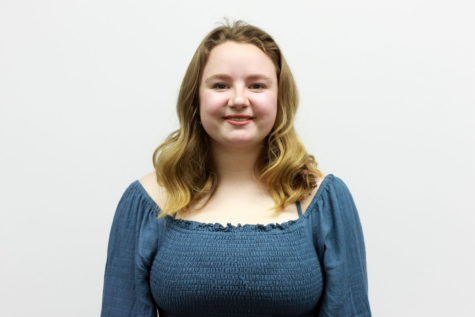
Mattie Freeze is a senior, and this is her second year on the newspaper staff. Freeze joined because she would like to go into broadcasting.
Other Interests:...

Maci Weathers is a senior, and this is her third year on the newspaper staff. Weathers joined newspaper because she was interested in the idea of Journalism. ...
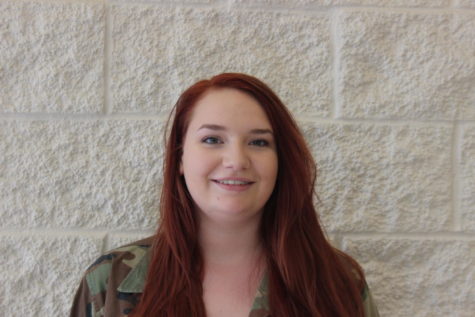
Rebekah Williams is a senior, and this is her second year on staff and first year as Editor. Williams joined newspaper because she enjoys writing and might...




